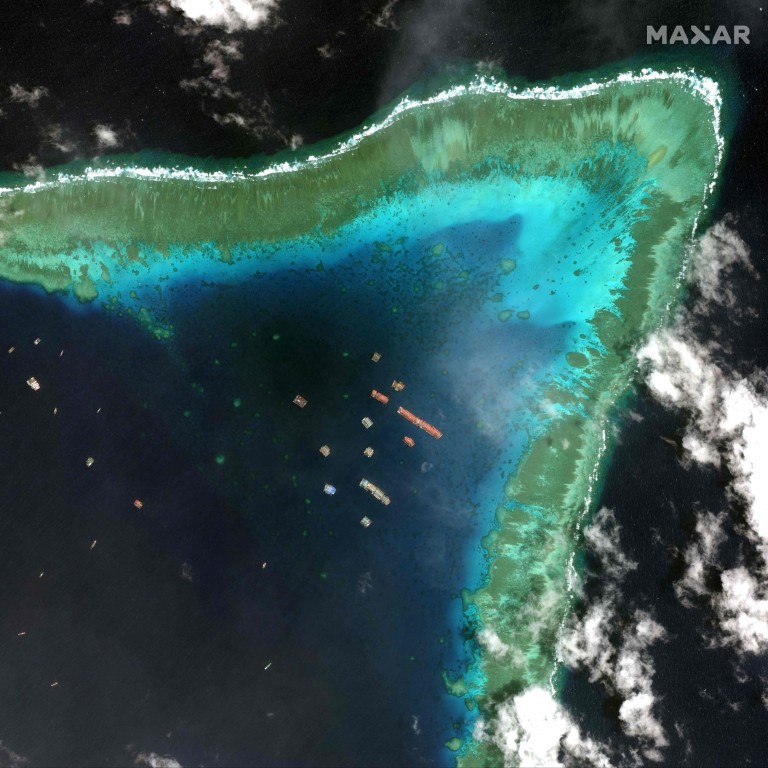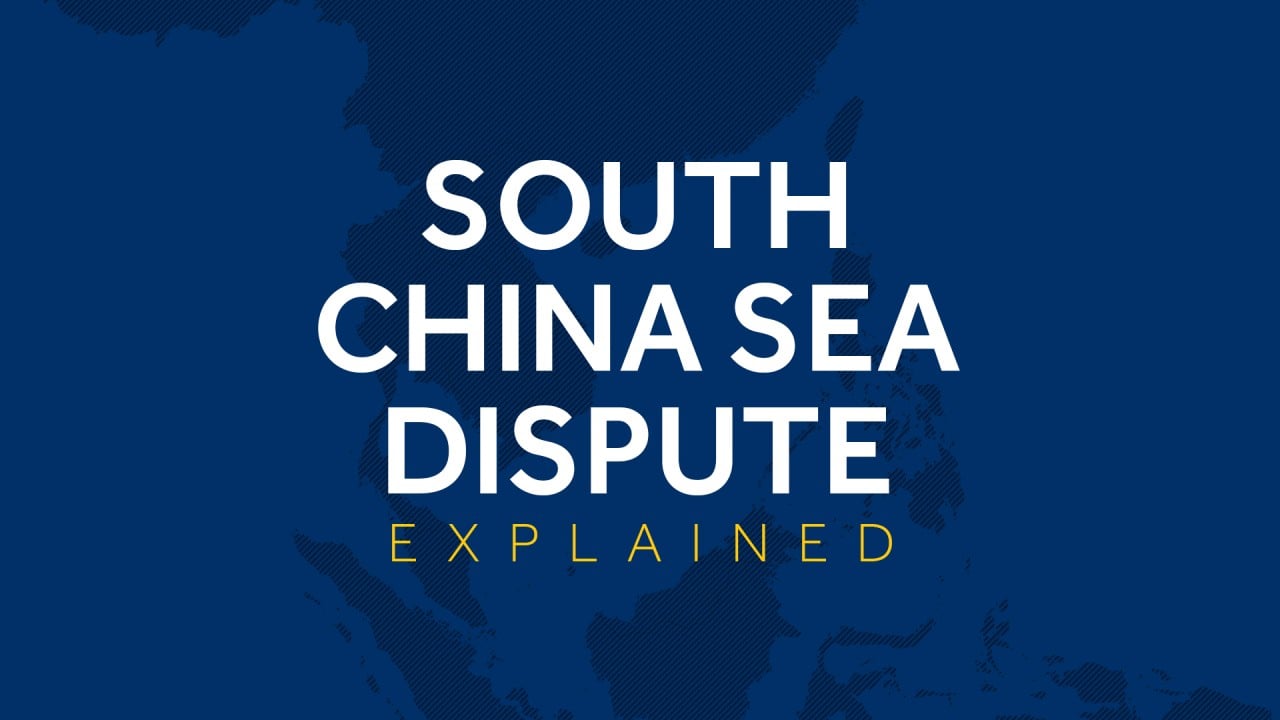
New US report dismisses Beijing’s claim to South China Sea ‘historical rights’
- State Department’s report builds on years of previous warnings about China’s territorial claims in the resource-rich waters
- China’s assertions ‘gravely undermine the rule of law in the oceans’, the US says
The US government stepped up its criticism of China’s territorial claims in the South China Sea on Wednesday, issuing a report that declares “historical rights” a meaningless term.
Beijing asserts “historic rights” over more than 80 per cent of the South China Sea region, including the Spratlys, via its “nine-dash line”– an area stretching as far as 2,000km (1,243 miles) from the mainland and reaching waters close to Indonesia and Malaysia.
Asked about the report on Thursday, Chinese foreign ministry spokesman Wang Wenbin said the US was “driving a wedge” between China and other countries in the region.
“China has been clear and resolute on its position on the so-called ruling on the South China Sea,” Wang said during a regular press conference. “It was illegal and invalid. China does not accept or acknowledge that.
“The US, despite being an outsider to the region, has frequently sought to provoke confrontation in the South China Sea and drive a wedge between [China and] countries in the region.”
The report also disputed China’s claims to more than 100 features in the South China Sea that are submerged during high tide – precluding them from sovereignty claims under international law.
It stressed that any feature’s legal status must be assessed based on its “natural state”, an apparent reference to China’s creation over the past decade of thousands of acres of new land in the Spratly Islands through dredging and artificial island building.
“Land reclamation or other human activities that alter the natural state of a low-tide elevation or fully submerged feature cannot transform the feature into an island,” the report said.
US navy chief backs ‘equitable’ use of resource-rich disputed waters
Alongside Wednesday’s report, the 150th in a 52-year series examining the validity of maritime claims around the world, the State Department also released Chinese and Vietnamese translations of its executive summary.
In July, the Biden administration endorsed a determination by the Trump administration that virtually all of China’s maritime claims in the South China Sea were unlawful, and vowed to act militarily if China were to attack any Filipino vessel or aircraft in the region.
Disputes between Beijing and Washington over the South China Sea have been escalating since Beijing began land reclamation operations in 2016 in some of the features it controls in the ocean’s Spratly archipelago.
The Biden administration contends that Beijing’s actions in the South China Sea threaten some US$3 trillion worth of commerce that passes through the region each year.
During a tour of Southeast Asian nations last month, US Secretary of State Antony Blinken vowed that the US, along with other countries who claim territories in the South China Sea, would “continue to push back on such behaviour”.
The Chinese government, however, has dug in by denouncing US naval operations in the region, including what the Pentagon calls “freedom of navigation” exercises in the region, which are meant to assert the waterways’ status as international sea routes.
“It is not China that has long been stirring up trouble in the South China Sea and posing a grave threat and major risks to regional peace and stability under the pretext of ‘freedom of navigation’,” Zhao said in December following Blinken’s remarks. “I’m sure we all know which country is in the habit of doing all these. I hope US officials will not misrepresent facts.”
Additional reporting by Catherine Wong



